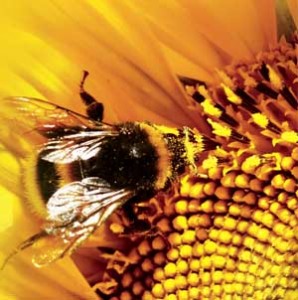
More evidence that low-calorie sweeteners are bad for your health
Studies show that artificial sweeteners can raise the risk of hypertension, metabolic syndrome, type 2 diabetes and heart disease, including stroke.

In the US a coalition of commercial beekeepers and environmental groups is urging regulators to suspend the use of the neonic pesticide clothianidin.
In a petition to the US Environmental Protection Agency (EPA), the group called for a ban on clothianidin saying that it disrupts the insects’ nervous systems.
This, in turn, makes them more vulnerable to pathogens by weakening their immune systems and could be a factor in so-called “colony collapse disorder,” a mysterious phenomenon that has taken a heavy toll on honeybee populations globally since 2006.
No safety data?
The EPA granted a conditional registration for clothianidin in 2003, whilst admitting that it needed further field studies to confirm that the chemicals did not cause “unreasonable adverse effects” on pollinators.
In 2010 a leaked memo detailed the concerns of two EPA scientists over allowing mustard and cotton seed to be treated with clothianidin, especially given that field testing of the pesticide was of such poor quality. You can watch the Video Vanishing of the Bees, featuring Tom Theobald, the beekeeper who leaked the EPA document, on our Best of the Web video selection or our You Tube channel, here.
The EPA, say protesters, has consistently ignored warnings and turned a blind eye to the fact that clothianidin has not been properly field tested.
“EPA ignored its own requirements and failed to study the impacts of clothianidin on honeybees,” said Peter Jenkins, an attorney for the Center for Food Safety and a co-petitioner. While clothianidin is toxic to honeybees, EPA officials say there is no proven link between the chemical and colony collapse disorder.
But the science says otherwise. As reported on our site in January bees are exposed to clothianidin through multiple pathways, which means that they are getting much larger and more lethal doses then anyone could have predicted.
Neonics cause bees to lose their bearings
Most recently, two studies in the prestigious journal Science found that even small doses of neonics impact bee behaviour and, ultimately, their survival and that the key is how they damage the insects nervous systems.
In the first study, French scientists glued tiny microchips to free-ranging western honeybees (Apis mellifera) in order to track their movements. They then administered small does of a neonicotinoid pesticide, called thiamethoxam, to some of the bees.
Exposed bees were two to three times more likely to not return from foraging excursions than unexposed bees. This implies that the pesticide impacts the bees’ homing ability, so instead of returning to the hive, bees get lost and die.
Missing queens
In the second study UK researchers exposed buff-tailed bumblebees (Bombus terrestris) to doses of a commonly used neonicotinoid pesticide called imidacloprid that were similar to what they would encounter in the wild.
The bumblebees were then released into an enclosed natural setting where they could forage freely.
After six weeks, the team weighed the nests and compared them with control colonies that had not been exposed. Pesticide-exposed colonies were on average 8-12% smaller than the colonies that had not been exposed, which implies that exposed bees were not gathering as much food.
However, even more alarming was the case of the missing queens. Pesticide-exposed colonies produced 85% fewer queens.
Queens are the most important bees in a colony, since they found new colonies after winter when all the other bees perish. It is not certain why pesticide-exposed bees produce fewer queens, though it may be that less food gathering results in fewer queens overall.
The evidence is now overwhelming, so much so that the UK government has been forced to reconsider its decision not to ban neonics.

Please subscribe me to your newsletter mailing list. I have read the
privacy statement